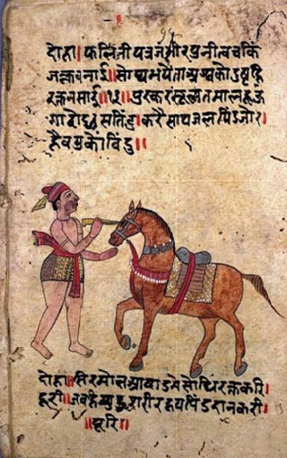Talk:Hindu Physicians, Veterinarians, Botanists, Environmentalists:Hindu Veterinarians
By Vishal Agarwal
Early Veterinary Practices in Ancient India
Many animals were first domesticated by the Hindus. In the Sarasvatī–Sindhu civilization (commonly called the Harappan culture or incorrectly as the Indus Valley Civilization), archaeologists have found a few seals showing decorated elephants that were perhaps a part of a procession.
Interestingly, archaeologists found an ancient manual of chariot racing in a country named Syria in the Middle East, which is a few thousand miles away from India. This manual is older than 1500 BCE. The interesting thing to note is that many terms used in this book are from the Sanskrit language.
Foreign travelers who visited India more than 1000 years ago noted that Hindus, Jains and Buddhists had opened hospitals even for the treatment of animals.
There were at least five manuals on horses in ancient India describing the types of horses, proper diet, curing illness in horses and so on. One of these manuals on horses is said to have been written by Nakula, one of the Pāṇḍava brothers. The picture on the left shows the page from a manuscript showing eye surgery being performed on a horse.
Another veterinarian named Śālihoṭra wrote several books on veterinary science of horses. These books were later translated into many languages like Arabic, Persian and Tibetan.
A Ṛṣi named Pālākāpyā who lived in Assam in eastern India many centuries ago also wrote a book called ‘‘Gajāyurveda’’ dealing with diseases of elephants. In fact, there was no similar book on this topic in the entire world till the 19th century! Scholars of ‘‘Gajāyurveda’’ in Kerala in southern India still use this book for the treatment of elephants.

